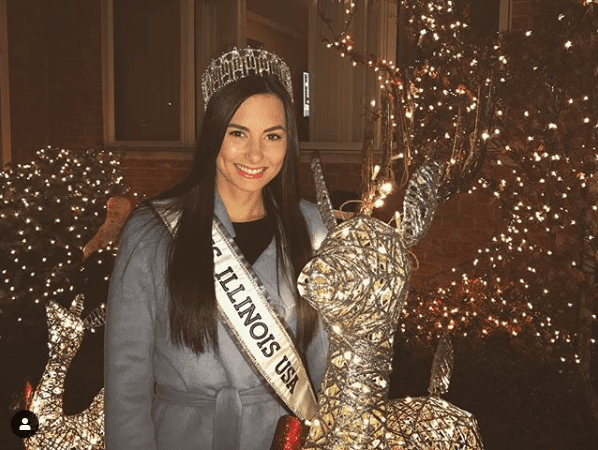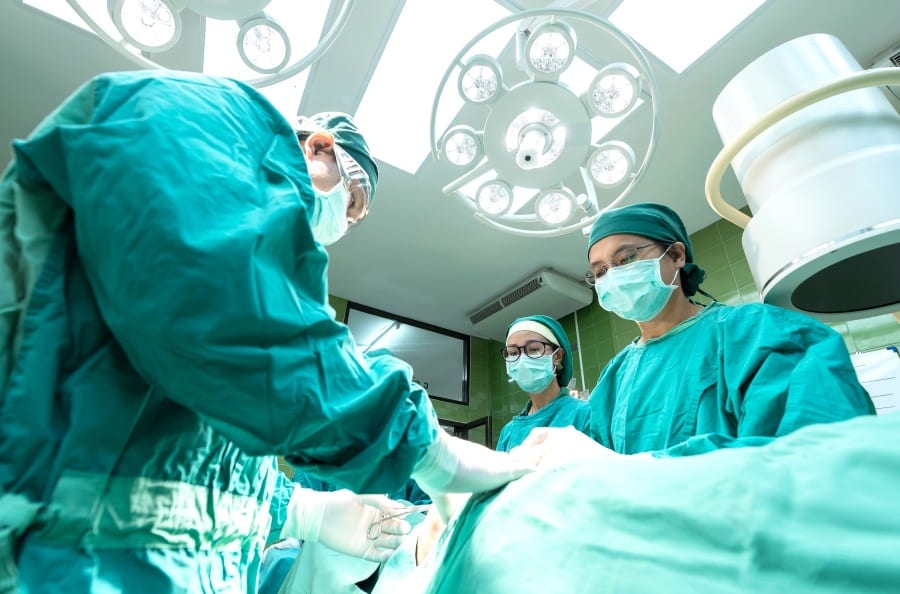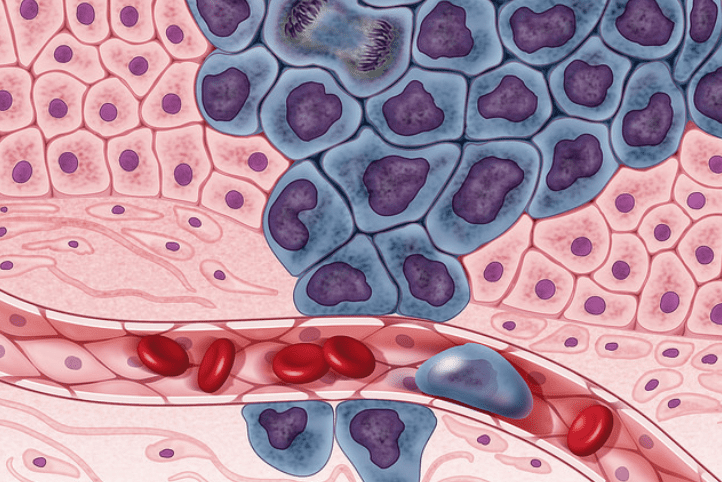I fucking love science. Because science can help us create things that seem like magic, but they’re real and they usually help humanity.
Recently a reddit thread asked the following question: What are some recent scientific breakthroughs/discoveries that aren’t getting enough attention? Of course, reddit users didn’t disappoint with their knowledge of all those things we haven’t heard about, but need to.
So check out these 13 discoveries and have faith in science. Because it’s provable and actually helps us all.
Amen.
1. Carbon Dioxide Flakes?
That we have figured out how to suck CO2 out of the atmosphere and now, very recently, how to turn it into solid flakes of carbon again. And not just under higly specific and expensive lab conditions, this process is apparently scalable.
We still need to curb emissions but this does flip the equation quite a bit regarding global warming, allowing us to put some of the toothpaste back into the tube so to speak.
Coupled with wind and solar energy, I predict this will become a major industry by mid-century, and very pure carbon an abundant material.
2. New killer whales?
Don’t know if anyone has pointed this one out… but pretty certain scientists have discovered a new species of orcas that live in sub-Antarctic waters.
They are calling it the “Type-D Orca”… pretty cool looking animals.
More rounded heads… smaller white eye patches… taller, narrower dorsal fins…
Being a soon to be marine biology grad, this excites me!
3. MDMA helping PTSD?
If the final trials go well (they are predicted to and the previous trials have done), MDMA-assisted psychotherapy will soon be an FDA-approved treatment for PTSD.
It is administered in a couple of doses over a few weeks and has lifelong effects.
The group doing this research got FDA Breakthrough Therapy status for it a few years ago and have been carrying out the phase 3 trials since early last year.
They were doing research into the same thing in Israel and it just got approved for compassionate use for PTSD in Israel this month.
Organization is called MAPS and they do some really interesting work.
4. Gluten-free?
There’s a good chance there will be a cure for celiac disease within the next 10 years.
There’s currently an active and ongoing clinical trial where participants (with diagnosed celiac) are getting infusions that will ultimately reverse the autoimmune response a person with celiac has when they consume gluten. It’s still far from complete, but we are closer than we’ve ever been to curing celiac disease.
**The clinical trial is taking place in Cleveland, Ohio. I was asked to be a part of it but unfortunately I just don’t have the extra time. If anybody local wants more information please message me and I can get you in contact with one of the researchers!
5. Skin guns?
Pretty recently they started doing tests for an extremely mobile skin grafting machine. It uses a kind of hydrogel out of the patient’s own skin, and scans the area of the burn then just prints out the skin.
Also, I saw a video a while ago about a guy who had a solution of skin cells airbrushed on the burn (mostly 2nd degree, IIRC). In 3-4 days he was healed with no scarring. The skin gun: https://youtu.be/eXO_ApjKPaI
6. Chemo that doesn’t poison you?
My job is coming came out with a drug that reduces the damage chemotherapy does to the body and helps regenerate blood cells faster, allowing for stronger doses to be administered and treatment scheduled to be reduced heavily.
This allows doctors to treat cancer more aggressively.
7. Bionic parts?
You can get hands and feet that are pretty close to the actual thing that operate by feeling the muscles that remain.
We will soon be long gone from the days of military style hooks and lumps of solid plastic.
8. Mental health issues caused by inflammation?
One of the more recent theories in psychiatry gaining popularity (although it was acknowledged decades ago) is the role of inflammation and the immune system in mental illness. There are studies showing that in schizophrenia and other psychotic conditions, inflammation attacks the brain. Some of the damage by inflammation might be irreversible, so the hope is that early intervention could prevent chronic schizophrenia. Trials have been attempted with anti-inflammatories like fish oil, with mixed success.
The role of inflammation has been extended to multiple mental illnesses, like depression, with raised inflammatory markers and other evidence being a common finding. Ultimately mental illness is multifactorial, and the causes are often biological, psychological, and/or social. So we can’t reduce something so complex and heterogenous to just an action by the immune system. But it has gained some excitement in the field because there could be people out there, for example, with schizophrenia for whom one of the primary causes is immune system dysregulation, and researchers are racing to find a prevention.
9. Diabetes no more?
They’re getting closer to a cure for type 1 diabetes. There’s already multiple people who have been cured with no need for insulin for years now after a clinical study
Here is the man that’s been cured: https://www.cityofhope.org/breakthroughs/rose-parade-diabetes-patient-roger-sparks
Here is a good breakdown of what they found in 2018: https://www.cityofhope.org/breakthroughs/wanek-project-to-cure-type-1-diabetes-18-months-later
And this is the latest new on the study: https://www.cityofhope.org/breakthroughs/study-by-diabetes-expert-describes-promising-type-1-treatments
10. New physics?!
Astronomer here!
Most of you have heard that the universe is expanding. Astrophysicists believe there is a relationship between the distance to faraway galaxies and how fast they are moving from us, called the Hubble constant.
We use the Hubble constant for… just about everything in cosmology, to be honest. This isn’t crazy and has been accepted for many decades.
What is crazy is, if you are paying attention, it appears the Hubble constant is different depending on what you use to measure it!
Specifically, if you use the “standard candle” stars (Cepheids and Type Ia supernovae) to measure how fast galaxies are speeding away from us, you get ~73 +/- 1 km/s/Mpc.
If you study the earliest radiation from the universe (the Cosmic Microwave Background) using the Planck satellite, you get 67 +/- 1 km/s/Mpc. This is a LOT, and both methods have a lot of confidence in that measurement with no obvious errors.
To date, no one has come up with a satisfactory answer for why this might be, and in the past year or so it’s actually a bit concerning. If they truly disagree, well, it frankly means there is some new, basic physics at play.
Exciting stuff! It’s just so neat that whenever you think you know how the universe works, it can throw these new curveballs at you from the most unexpected places!
11. Glad + Metal = ?!
Earlier this month, scientists were able to successfully weld glass and metal together using ultrafast (on the order of picoseconds, which are such a short unit of time that compared to it, a full second might as well be 30,000 years) laser pulses.
This hasn’t been successfully done before due to the very different thermal properties of glass and metal.
This is actually a pretty big breakthrough in manufacturing and could lead to stronger yet lighter materials.
12. Special K treats depression?
The FDA just approved ketamine as an antidepressant for treatment-resistant depression in the form of esketamine as a nasal spray.
It’s of the few unique and hopeful approaches to treatment-resistant depression that we’ve seen in years—some stats put the rate of recovery as high as 80%.
This doesn’t give you full recovery, but alleviation at least.
13. We’re still discovering lost history?
Göbekli Tepe – ruin discovered in Turkey that dates back to 11000 BCE, or further.
This throws a massive wrench into our understanding of what people were capable of at that time, and hints at advanced civilizations having likely existed long before we thought they did.
It has also only been about 10% excavated.
Also…
I’ve actually read some articles over the past few weeks about archaeologists using LIDAR technology to uncover Mayan ruins, and they’ve found that Mayan civilization was much more extensive than originally assumed.
At its height, its now believed that its population may have numbered near 15 million citizens, and that they engaged in extensive trade with their neighbors to the North and South; these LIDAR scans have revealed evidence of vast cities, farmlands and roadways. And this was all without any pack animals or wheeled carts.
Well, look at what science keeps doing for us!
Believe in science, folks. It always comes through eventually.
The post 13 Game-Changing Scientific Discoveries Everyone Needs To Know About appeared first on UberFacts.

 (
( ) Repost @rorysmithire ・・・ @barberbarberuk Flattop Fridays #flattop #handlebarmustache #handlebarmoustache #inthebarberchair #irishbarber #barber #barbershop #barbering #barbercut #clippercut #freshhaircut #freshfade #freshcut #menshair #menshaircut #menscut #menshairstyle #traditionalbarber #traditionalbarbering #vintagebarbering #oldschoolbarber #britishbarber #britishbarbers #britishbarbering #britishmasterbarbers #ukbarber #ukbarbers
) Repost @rorysmithire ・・・ @barberbarberuk Flattop Fridays #flattop #handlebarmustache #handlebarmoustache #inthebarberchair #irishbarber #barber #barbershop #barbering #barbercut #clippercut #freshhaircut #freshfade #freshcut #menshair #menshaircut #menscut #menshairstyle #traditionalbarber #traditionalbarbering #vintagebarbering #oldschoolbarber #britishbarber #britishbarbers #britishbarbering #britishmasterbarbers #ukbarber #ukbarbers Flattop Haircut
Flattop Haircut  Today I proudly wear red. I'm glad that nature feels the same way.
Today I proudly wear red. I'm glad that nature feels the same way. 
 . . . . . . #independente #independence #red #tree #dawn #nature #handlebarmoustache #handlebar #moustache #Africa #SouthAfrica #Gauteng #Johannesburg
. . . . . . #independente #independence #red #tree #dawn #nature #handlebarmoustache #handlebar #moustache #Africa #SouthAfrica #Gauteng #Johannesburg

 Toma el control de tu salud, hazte una #EvaMember y tendrás acceso a
Toma el control de tu salud, hazte una #EvaMember y tendrás acceso a -Una exploración mensual con Eva -Una mastografía o ultrasonido anual -Seguimiento personalizado a la salud de tus pechos -Acceso a biopsia de ser necesario -Una invitada gratis . . * Eva es un método adjunto para el monitoreo de la salud de los pechos. La tecnología de Eva está aprobada por la FDA en la sección "Sec. 884.2980 Telethermographic system”. Eva no es un sustituto a la mastografía o a herramientas de tamizaje adicionales.
-Una exploración mensual con Eva -Una mastografía o ultrasonido anual -Seguimiento personalizado a la salud de tus pechos -Acceso a biopsia de ser necesario -Una invitada gratis . . * Eva es un método adjunto para el monitoreo de la salud de los pechos. La tecnología de Eva está aprobada por la FDA en la sección "Sec. 884.2980 Telethermographic system”. Eva no es un sustituto a la mastografía o a herramientas de tamizaje adicionales.










